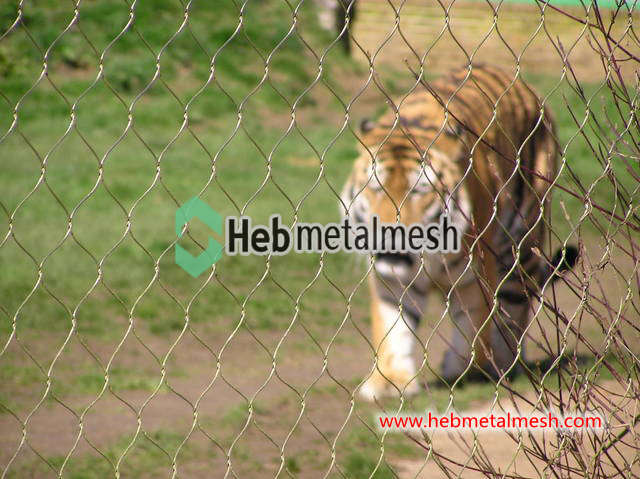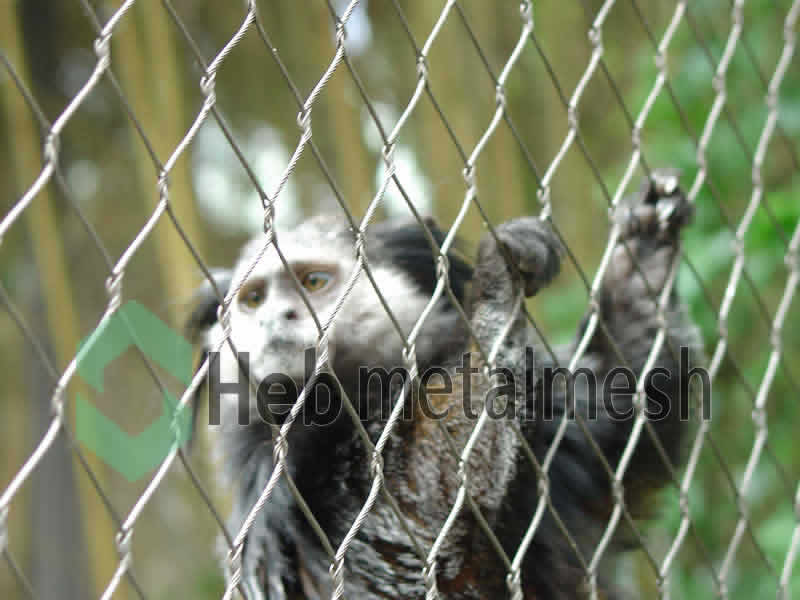The Importance of Safety in Tiger Exhibits
Ensuring safety within tiger exhibits is paramount for the well-being of both the majestic animals and the visiting public. The nature of tiger behavior—which includes strength, agility, and natural predatory instincts—poses unique challenges in creating environments that are both engaging and secure. Safety measures are not only essential for preventing accidents but also for promoting the welfare of the tigers, allowing them to exhibit natural behaviors within a secure enclosure.
To achieve this, impregnable barriers are a foundational element of modern tiger exhibits. These barriers must be carefully designed to prevent any possible escape by the tigers while also ensuring that visitors can safely observe these magnificent creatures from a distance. Common safety features include reinforced glass walls, deep moats, and tall fencing combined with security systems that can monitor the animals and their surroundings effectively. The combination of these elements is crucial in creating a safe viewing experience without compromising the tigers’ comfort or natural behavior.
Moreover, the design of the tiger exhibit should also consider the psychological well-being of the tigers. Providing environments that include vertical spaces for climbing, water features, and adequate hiding spots not only supports their natural instincts but also reduces stress and promotes a more stable temperament. Thus, safety is not solely about physical barriers, but also about creating an environment that respects and fulfills the needs of the animals.
Visitor education plays a critical role as well. Informing the public about the nature of these animals and the importance of respecting barriers can foster an atmosphere of awareness that enhances the overall experience of the tiger exhibit. By emphasizing safety in design and education, the tiger exhibit can serve as both a captivating display and a model for responsible management of wildlife in captivity.
Engineering for Strength: The Role of High-Tensile Stainless Steel Cable
In designing a suitable habitat for big cats, such as tigers, the engineering materials utilized play a pivotal role in ensuring both safety and functionality. High-tensile stainless steel cable emerges as a critical component when constructing tiger exhibits due to its superior strength and durability. This type of cable is engineered to withstand immense force, which is essential considering the natural behaviors of tigers, including climbing, jumping, and exploring their enclosures.
One prominent feature of high-tensile stainless steel is its remarkable tensile strength, which allows it to bear heavy loads without deforming or breaking. For tiger exhibits, where the weight and power of the animals can be significant, utilizing such robust materials is paramount. Furthermore, the corrosion resistance of stainless steel adds longevity to these structures, reducing the need for frequent replacements and ensuring ongoing safety. As a result, these design choices not only protect the animals but also instill confidence in zoo visitors who seek to observe these majestic creatures in a secure environment.
The versatility of high-tensile steel cable is another advantage. It can easily be configured into various shapes and configurations to create engaging and visually appealing enclosures that mimic the animals’ natural habitats. This enhances the immersive experience for visitors while maintaining the integrity of safety protocols. Additionally, the transparent nature of the cable allows for unobstructed visibility for observers keen to witness the tigers’ behaviors up close. In narratives concerning tiger exhibits, the use of high-tensile stainless steel cable represents a fusion of innovative engineering and animal-centric design, underlining the commitment to both the well-being of the big cats and the satisfaction of the zoo’s clientele.
Minimizing Barriers: Enhancing Visitor Experience
In contemporary zoo design, minimizing physical barriers between visitors and animals has emerged as a key focus in creating engaging and educational environments. The adoption of a large 30′ x 60′ mesh panel design for tiger exhibits significantly enhances the visitor experience by providing unobstructed views of these magnificent creatures. This design prioritizes both safety and immersion, allowing visitors to observe tigers in a manner that is both respectful of their natural behaviors and highly engaging for those wishing to learn more about them.
The mesh panels serve as a transparent barrier, ensuring that visitors can witness the tigers at play, while also safeguarding both the animals and the guests. This unobstructed viewing enables better observation of the tigers’ complex behaviors, including their social interactions and hunting techniques. By creating a space where barriers are minimized, the visit becomes a more informative and fulfilling experience. People are able to appreciate the majesty of the tigers up close, fostering a deeper emotional connection to wildlife conservation efforts.
Furthermore, this design approach significantly enhances opportunities for photography. With clear lines of sight, guests can capture stunning images of tigers in dynamic poses, which may lead them to share their experiences on social media. Such engagement not only promotes the zoo but also raises awareness about the importance of tiger conservation. As visitors share their encounters, they contribute to a broader conversation about preserving these endangered species and their habitats.
In summary, the innovative mesh panel design implemented in tiger exhibits represents a pivotal advancement in fostering both visitor engagement and animal welfare. By providing an immersive viewing experience, zoos can nurture a sense of responsibility and curiosity in their guests, reinforcing the critical role they play in wildlife conservation.
Aesthetic Integration: Environmental Blending of Exhibits
Creating a visually appealing and immersive tiger exhibit is essential for both animal welfare and visitor experience. One of the critical elements in achieving this goal is the selection of appropriate color options for the mesh that surrounds the exhibit. The mesh serves as a barrier, ensuring the safety of the tigers while allowing for an unobstructed view for visitors. Choosing the right color can seamlessly integrate the exhibit into the surrounding environment, enhancing the overall aesthetic of the habitat.
There are primarily two color options available for the mesh used in tiger exhibits: natural tones and black. The natural color options, such as browns and greens, can effectively blend into environments rich in vegetation and earthy hues. These colors mimic the natural habitats of tigers, creating a more authentic experience for viewers while promoting a sense of tranquility. On the other hand, black mesh can provide a stark contrast to its surroundings, making it less visible against darker backdrops such as trees and rocks, thus encouraging visitors to focus on the tigers without distraction.
When designing a tiger exhibit, it’s essential to analyze the specific surroundings where the exhibit will be situated. Factors such as existing foliage, nearby structures, and the overall theme of the zoo or sanctuary play significant roles in determining the most suitable color for the mesh. Additionally, implementing a combination of natural tones and strategically placed black sections can create visual variety, leading to a dynamic and engaging environment. This careful consideration of aesthetic elements not only enhances the visual appeal of the exhibit but also fosters a more immersive experience for visitors and ensures the well-being of the tigers.
Durability at Its Best: The Longevity of 316-Grade Stainless Steel
When designing a tiger exhibit, the choice of materials is critical, particularly when it comes to ensuring longevity and durability. One of the most effective materials for this purpose is 316-grade stainless steel. This form of stainless steel is renowned for its excellent corrosion resistance, thanks to its unique composition that includes molybdenum, which enhances its durability against harsh environmental conditions. Tiger exhibits are often subjected to moisture and other corrosive agents, making the choice of material even more crucial; 316-grade stainless steel proves to be an optimal solution.
In addition to its corrosion resistance, 316-grade stainless steel exhibits remarkable strength and structural integrity. This characteristic is especially important for enclosures designed to contain powerful animals like tigers. The robust nature of this steel type ensures that the exhibit can withstand the various stresses imposed by the animals, as well as the external environment, thereby enhancing safety for both the tigers and the visitors. This ensures that the tiger exhibit remains secure and contributes to the overall well-being of the animals.
Another significant advantage of using 316-grade stainless steel is its low maintenance requirement. This material is not only durable but also easy to clean, which is essential in maintaining hygiene within the exhibit. Minimal maintenance translates to lower operational costs over time, forming a solid return on investment for facilities. Overall, the long-term benefits, coupled with lower upkeep expenses, make 316-grade stainless steel an ideal choice for those investing in the infrastructures surrounding tiger exhibits.
Building a Complete Tiger Habitat: More Than Just a Fence
When designing a tiger exhibit, the focus must extend beyond mere containment solutions like fences. The modern tiger habitat incorporates advanced materials, such as durable mesh, which plays a pivotal role in creating safe and enriching environments for these magnificent animals. Typically, traditional barriers detract from the naturalistic settings that are essential for promoting the well-being of tigers, whereas mesh structures allow for an expansive visual and physical connection between the animals and their visitors.
The implementation of high-strength mesh is one of the most significant advancements in the construction of tiger exhibits. Unlike solid barriers, mesh fencing allows for uninterrupted sight lines that mimic a tiger’s natural habitat. This openness not only enhances the animal’s experience but also fosters a greater sense of immersion for the guests. Such configurations encourage tigers to engage in their natural behaviors, such as climbing, exploring, and pacing, instead of being confined to a limited area, ultimately promoting mental stimulation and reduced stress.
Furthermore, the integration of mesh within a tiger habitat enables a multifaceted approach to animal welfare. It can facilitate an enriched exterior environment that includes climbing structures, shallow pools for swimming, and diverse foliage, imperative for a feline species that thrives in varied landscapes. Additionally, mesh barriers can be designed to include safety features such as viewing corridors that keep guests at a safe distance while simultaneously allowing unhindered views of the tigers. This design fosters appreciation and respect for the species while ensuring the well-being of the animals themselves.
In conclusion, the design of an effective tiger exhibit demands thoughtful consideration of materials like mesh. This not only serves as a safety measure but also as a crucial element in constructing an expansive, immersive habitat that cultivates the natural behavior of tigers, ensuring their welfare while enchanting visitors.
Meeting the Highest Standards of Animal Care
The design and implementation of a tiger exhibit play a pivotal role in ensuring the highest standards of animal care and welfare in modern zoos. These exhibits must be thoughtfully crafted to provide tigers with an environment that closely mimics their natural habitat. By utilizing high-quality materials and innovative layouts, zoos can create spaces that meet the complex needs of these majestic animals.
First and foremost, the physical environment of a tiger exhibit should encompass various elements that stimulate both the natural behaviors and the psychological well-being of the tigers. Incorporating vertical spaces, such as climbing structures and shaded areas, allows tigers to climb and retreat, mimicking their instinctual behaviors in the wild. Additionally, using water features, such as pools or streams, provides a habitat where tigers can observe and interact, promoting exercise and engagement.
Moreover, the materials utilized in constructing the exhibit should be both durable and environmentally friendly. Strong barriers that ensure the safety of both the tigers and the visitors are crucial. Transparent fencing made from high-quality glass or strong mesh allows for unobstructed views, enhancing the visitor experience while minimizing stress for the animals. Furthermore, non-toxic, sustainable materials should be prioritized in the exhibit’s design to protect the health of the tigers and the overall ecosystem.
Thoughtful layouts of tiger exhibits can contribute significantly to animal welfare. Providing sufficient space allows tigers to express their natural behaviors, reducing stress and aggression. The careful placement of enrichment opportunities, such as toys, scent trails, and feeding stations, fosters engagement and mental stimulation. By considering these aspects in the creation of tiger exhibits, zoos are not only enhancing animal care but also enriching the educational experience for visitors.
Ultimately, meeting the highest standards of animal care in tiger exhibits is a multi-faceted approach that emphasizes realistic environments, safety, and enrichment. These elements work together to ensure that tigers live healthy, fulfilling lives while also facilitating positive interactions with zoo visitors.
Visitor Satisfaction: An Essential Component
Visitor satisfaction plays a crucial role in the overall success of zoo operations, particularly in the context of tiger exhibits. A well-designed exhibit that mirrors the natural habitat of tigers not only enhances the viewing experience but also fosters a deeper appreciation and understanding of these magnificent creatures. By prioritizing animal welfare in the design of tiger exhibits, zoos can create immersive environments that captivate visitors’ attention while ensuring the well-being of the animals.
Naturalistic viewing areas allow visitors to observe tigers in settings that resemble their native habitats. This type of exhibit incorporates elements such as lush vegetation, water features, and terrain variations, providing an enriching experience for both the animals and the visitors. When guests see tigers engaging in natural behaviors, such as climbing, swimming, or playing, it adds authenticity to their visit and encourages a stronger emotional connection to the animals.
Moreover, engaging environments within tiger exhibits can actively involve visitors in learning about the species. Informative signage, interactive displays, and opportunities for behind-the-scenes tours can significantly enhance the educational components of a zoo visit. By providing valuable information about tiger conservation, habitat loss, and the specific challenges these majestic animals face in the wild, zoos can elevate visitor awareness and foster a sense of responsibility for wildlife preservation.
Ultimately, a well-crafted tiger exhibit not only improves the overall visitor experience but also translates into higher levels of satisfaction. Guests who feel captivated and educated throughout their visit are more likely to return and share their experiences with others, supporting the zoo’s mission to promote conservation and wildlife education. By focusing on the creation of immersive and educational tiger exhibits, zoos can fulfill their commitment to animal welfare while simultaneously enriching the visitor experience.
Conclusion: The Future of Tiger Exhibits
As we reflect on the evolution of tiger exhibits, it becomes evident that a harmonious balance between animal welfare and visitor experience is paramount for their future. Modern zoos are shifting towards designs that prioritize the physical and psychological well-being of tigers, while simultaneously enhancing the educational and immersive experiences for visitors. By implementing innovative habitat solutions, facilities can create tiger exhibits that closely mimic the natural environment of these majestic creatures.
Safety measures play a crucial role in the ongoing development of tiger habitats. Ensuring secure barriers that both protect visitors and allow tigers to exhibit natural behaviors is essential. Advanced technology, including surveillance systems and digital monitoring, further elevates safety, allowing for real-time assessment of animal health and well-being. These precautions not only safeguard visitors but also contribute to a higher standard of animal care.
Aesthetically pleasing tiger exhibits have the potential to engage and educate the public effectively. Thoughtful landscaping, which incorporates natural elements like trees and water features, not only provides enrichment for the tigers but also captivates visitors. By fostering this sensory experience, zoos can facilitate a deeper connection between the audience and the majestic animals, resulting in a more profound appreciation for wildlife conservation efforts.
In conclusion, the future of tiger exhibits lies in an integrative approach that harmonizes animal welfare, safety, and visitor engagement. As zoological institutions continue to innovate in their exhibit designs, they must remain committed to promoting ethical standards, ensuring the emotional and physical health of tigers while inspiring the next generation of conservationists. The evolution of tiger exhibits represents a significant step forward in the realm of animal care and public education, nurtured by a devoted commitment to the welfare of these extraordinary animals.
FAQs
Stainless steel netting offers superior strength, durability, and corrosion resistance, providing a safer and more secure environment for tigers.
The handwoven pattern of stainless steel netting can mimic the look and feel of natural vegetation, providing a more immersive and stimulating environment for tigers.
Safety protocols and regulations must be followed during the design, construction, and operation of a tiger exhibit, including regular inspections and maintenance.
By providing a more engaging and informative visitor experience, stainless steel netting exhibits can help to raise awareness about tiger conservation and inspire support for conservation initiatives.


